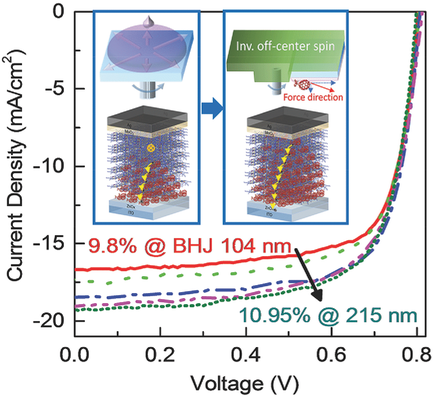One of the most pressing challenges of our time is the transition from a predominantly fossil-based energy supply to renewable ones. Photovoltaics, or more precisely the method of converting solar energy into direct-current electricity, is for many reasons a particularly attractive form of renewable energy.
Organic photovoltaic (OPV) cells are a special type of photovoltaic that uses organic electronics. They are a potential low-cost and environmentally friendly solution to ever-growing global energy needs. Some of the most promising device structures for these cells are the so-called bulk heterojunctions (BJHs), which incorporate a light-absorbing layer consisting of a blend of two organic materials. A particular challenge with these types of devices is maintaining performance when the BHJ layer thickness is increased.
Using a combination of techniques at four ALS beamlines, researchers studied the crystals present in a newly developed BHJ blend and measured its material domain sizes, its total blend composition, and its surface composition. These measurements helped to confirm that the new fabrication technique improved the vertical composition gradient of the two organic components in the blend. This allows its potential use in high-performance devices with thicknesses more than twice that of a typical BHJ. The research both introduces a novel technique that can improve BHJ fabrication and highlights the importance of thoroughly characterizing morphology in order to fundamentally understand these materials and devices.

Work performed at Beamlines 7.3.3, 11.0.1.2, 5.3.2.2, and 6.3.2.
Jiang Huang, Joshua H. Carpenter, Chang-Zhi Li, Jun-Sheng Yu, Harald Ade, and Alex K.-Y. Jen, “Highly Efficient Organic Solar Cells with Improved Vertical Donor–Acceptor Compositional Gradient Via an Inverted Off-Center Spinning Method,” Advanced Materials 28, 967 (2016).